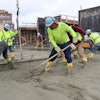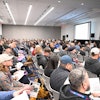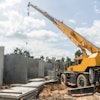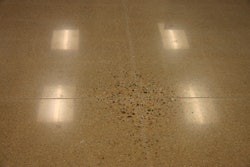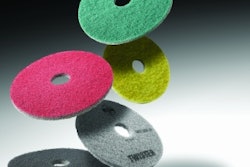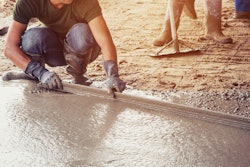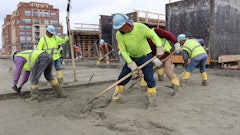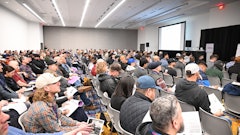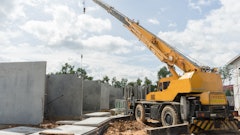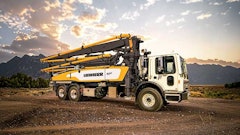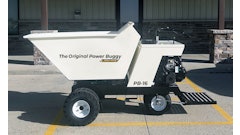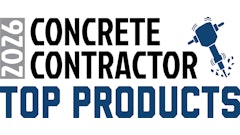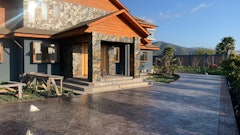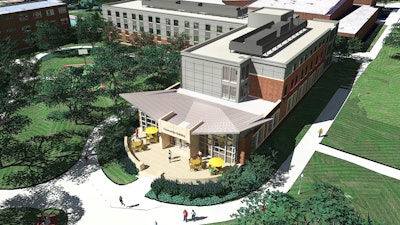
As universities and colleges look to design new residence halls and dining facilities, KWK Architects’ experts say the best way that architects can improve their design standards is by speaking directly with students about their needs and wants for a space. They claim the process is a crucial part of the process.
KWK Architects used input from student leadership groups to design the new living/learning residence hall at Augustana University in South Dakota. The new L-shaped, three-story hall will house up to 200 students and include semi-suites with four beds and a bathroom in each unit. A community building at the front of the hall will include shared multi-purpose spaces, and incorporate living and learning environments for faculty, students, and affinity groups on campus.
Typically, residence halls have been known as a place to sleep – a dorm. Apparently, however, this is an outdated term. According to KWK principal Paul Wuennenberg, students can spend 70% of their time outside the classroom. These halls are more than a place to sleep, there’s office hours, learning areas, classes, lectures, etc. – an infusion between how the space will be used and the design.
This infusion continues throughout the process and into not just the construction, as a lot of nuances come into play just by a project being on-campus to consider. “On campus, it’s a little bit different than your average construction project, Wuennenberg says. “There’s a lot of pedestrian traffic. [Contractors] have to coordinate with dump trucks to make sure students are safe, routes to and from the academic core of the campus to the existing housing, when to start work and can’t do certain things on site to cause noise.” The communication and engagement with students is important. Notifying students of safe routes and understanding that noisy work like excavation will likely not be able to begin until after 8 a.m.
The Augustana University in South Dakota residence hall construction will be a 53,000 sq. ft. building featuring semi-suites with a separate entry and security for the housing area. A community space is planned for the first floor which includes a kitchen area, classrooms, lounging, and offices.
“It’s got a large glass pavilion at the end of the building that kind of glows at night,” describes Wuennenberg, who calls the building an inviting “jewel box” that welcomes everybody. This infusion of design and visual engagement of the building was also brought throughout the interior floorplan like the placement of amenities.
One of the unique challenges Wuennenberg’s team had was the construction of a concrete grade beam going over an existing and operational utility tunnel beneath the building - explaining that it’s like building a bridge underground. “We stopped the foundations on both sides of that tunnel, and then not unlike what you would see like in a parking garage, we created a concrete beam that spans across the top of it. So, we’re not throwing any load onto the top of the tunnel, but it’s being transferred down to the sides and into the footings. The building is supported from that.”
Making sure the decorative elements coordinate with the existing brick campus language, the building features a concrete terrace from a glass pavilion with sidewalls for seating. KWK is also utilizing some precast concrete trim and cement board panels with the masonry.
Founded in 2013 by five architects with a combined 120 years of higher education knowledge and experience, KWK Architects partners with colleges and universities across the U.S. to create innovative and inspiring places that enhance campus life. Areas of expertise include student housing and dining, and academic and science/technology spaces. The firm has completed more than $1 billion in construction-valued projects since its founding and currently employs a growing staff of 13 at its headquarters in St. Louis, MO.
KWK likes to engage students, explains Wuennenberg, but understands that it’s a matter of perspective. Where some opt to not, he says that 90% of the time universities want the students engaged. “They want to know that they’re making the right decisions,” he says. While those that participate may not be the exact people using the building in the future, this connection provides insight into the culture – allowing KWK to learn what was unique about the institution versus another.
“Student leadership groups are encouraged to be involved throughout the duration of the design process to determine what they would like to have or not have in the spaces that they frequent the most,” says Wuennenberg. “Architects who show that they care about student input and take the time to listen to their opinions will ultimately have a better design result.”
Of the many inputs, students mentioned that they needed “chapter rooms” large enough to seat 80 to 100 people for fraternities and sororities. “That very much affects our structural system,” mentions Wuennenberg. This infusion between the structural plans aided the understanding of how students were going to use the spaces and how KWK went about providing a structure for it.
There are several methods that architects can use to solicit design feedback from students. Although, they may be rewarded for their participation in the design process with dining credits, Amazon or iTunes gift cards, pizza parties, t-shirts or other fun activities determined by the university.
- Virtual tours where students can view the tentative design plan and make comments
- Focus groups where students can bounce their ideas off one another
- Online surveys where students can provide feedback on the types of units they prefer including the cost differences
- Suggestion boxes on campus where students can submit their input in writing
- Dot surveys where students have input on the types of spaces they like, such as colorful, contemporary or having a home or lodge-feel
KWK suggests that designers should consider working with student housing administrators on campus to determine which student organizations would be best to work with. Where return of investment, budget, and schedule are important factors for owners, Wuennenberg has found that users have a lot of input and understanding that can be a key factor in a successful project. “One of the things about delivery methods now, [contractors] are there at the meetings,” says Wuennenberg. “They hear firsthand what’s important, they’re not just getting a set of plans and specs and building from it but they know why, and why these things are important. I always feel it’s good to have the contractor at the table from the beginning of the design because…it affects the design.”

